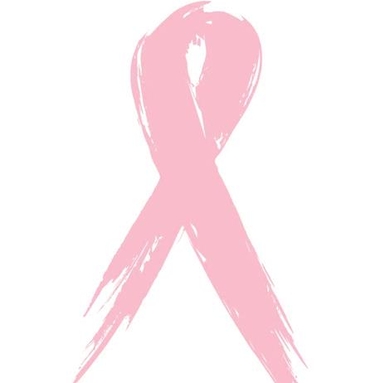Breast Cancer facts

Breast cancer claims the lives of thousands of women in the United States each year. Learn basic information about breast cancer and how to prevent and recognize it.
What is breast cancer?
Cancer is a disease in which cells in the body grow out of control. When cancer starts in the breast, it is called breast cancer. The breast is made up of three main parts: glands, ducts, and connective tissue. Sometimes, breast cells become abnormal and grow faster than normal cells. These extra cells form a mass called a tumor. Some tumors are “benign,” or not cancerous. Other tumors are “malignant,” meaning they are cancerous and have the ability to spread to other parts of the breast and body and disrupt normal functions in those areas.
All women are at risk for breast cancer. Men can also get breast cancer, but this is rare. Breast cancer is the second most common cancer in women. Among Hispanic women, it is the most common cause of cancer deaths, and it is the second most common cause of cancer deaths among white, black, Asian or Pacific Islander, and American Indian or Alaska Native women. Although more white women get breast cancer, more black women die from it. Each year, approximately 190,000 women are diagnosed with breast cancer and 40,000 women die from the disease.
What puts me at greater risk?
Several factors may affect your risk of developing breast cancer, including:
- Getting older
- Not having children, or having your first child later in life
- Starting your first menstrual period at an early age
- Beginning menopause at a late age
- Having a personal history of breast cancer or certain benign breastdiseases, such as atypical ductal hyperplasia
- Having close family relatives (such as a mother, sister, father, or daughter) who have had breast cancer
- Having a genetic condition, such as certain mutations in your BRCA1 or BRCA2 genes
- Having been treated with radiation therapy to the breast or chest
- Being overweight, particularly after menopause
- Using hormone replacement therapy for a long time
- Using oral contraceptives
- Drinking alcohol
- Being physically inactive
What are the symptoms?
When breast cancer starts out, it is too small to feel and does not cause signs and symptoms. As it grows, however, breast cancer can cause changes in how the breast looks or feels. Symptoms may include:
- A new lump in the breast
- A lump that has changed
- A change in the size or shape of the breast
- Pain in the breast or nipple that does not go away
- Flaky, red, or swollen skin anywhere on the breast
- A nipple that is very tender or that turns inward
- Blood or any other type of fluid coming from the nipple that is not milk when nursing a baby
These symptoms may be caused by something other than cancer, but the only way to know is to get checked.
How can I find out if I have breast cancer?
Women should begin to have routine screenings for breast cancer at the age of 50. Women under the age of 50 should talk to their health care provider about when and how often they should be screened.
If you have any risk factors or symptoms of breast cancer, talk to a doctor, nurse, or health care professional.
A mammogram is the best test for finding breast cancer early. It is a series of X-ray pictures of the breast that allow doctors to look for early signs of breast cancer, sometimes up to three years before it can be felt.
If your mammogram is abnormal or more tests are required, do not panic. An abnormal mammogram does not always mean you have cancer. It does mean
that you will need to have some additional X-rays or other tests before your doctor can be sure. Other tests may include an ultrasound (picture taken of the breast using sound waves) or a biopsy (removing tissue samples to be looked at closely under a micro-scope). You may be referred to a breast specialist or a surgeon, because these doctors are experts in diagnosing breast problems.
Treatment is most effective when breast cancer is found early, and many women go on to live long and healthy lives.
How can I prevent breast cancer?
Scientists are studying how best to prevent breast cancer. There are things you can do to help lower your risk of getting breast cancer, including:
- Staying physically active with regular exercise
- Maintaining a healthy weight
- Avoiding hormone replacement therapy (HRT), or finding out the risks and benefits of HRT and if it is right for you
- Limiting the amount of alcohol that you drink
About the National Breast and Cervical Cancer Early Detection Program (NBCCEDP)
NBCCEDP provides public education, free and low- cost breast and cervical cancer screenings, and diagnostic services to low-income, uninsured, and underserved women. If you have a low income or do not have insurance, and are between the ages of 40 and 64, you may be able to get a free or low-cost mammogram.
The Gayly – October 7, 2016 @ 11:30 a.m.





